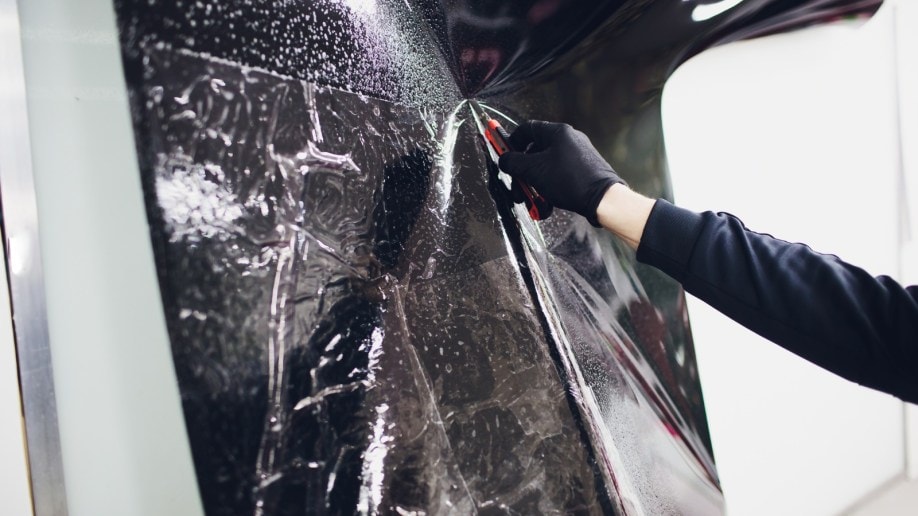AO Detail Window Tintingto Protect Against Ultraviolet Radiation
AO Detail Window Tintingto Protect Against Ultraviolet Radiation
Blog Article
Eco-Friendly Window Tinting: Conserve Energy and Reduce Your Carbon Footprint
Environment-friendly Window tinting represents a substantial innovation in sustainable structure methods, supplying both power financial savings and a decrease in carbon emissions. As the demand for sustainable solutions rises, recognizing the subtleties of picking the right Window tint becomes necessary for services and homeowners alike.
What Is Eco-Friendly Window Tinting?

Environmentally friendly Window tinting refers to Window film products designed with lasting materials and procedures that minimize ecological effect while boosting energy effectiveness. These products are usually produced using non-toxic, recyclable products, guaranteeing that their production and disposal do not add to ecological deterioration.
The technology behind environmentally friendly Window tinting includes sophisticated applications that offer UV security, glow decrease, and thermal insulation, all of which can dramatically minimize energy usage in household and commercial structures. By controling interior temperatures, these movies help maintain a comfy living or working setting while lowering the dependence on heating and cooling down systems.
In addition, environmentally friendly Window tinting can be related to different glass surface areas, including property home windows, office buildings, and automobile glass, making it a versatile alternative for various applications. The setup procedure usually entails very little interruption, enabling a seamless shift to a much more sustainable solution.
Eco-friendly Window tinting not only sustains energy conservation initiatives yet additionally contributes to a much healthier interior ambience by filtering hazardous UV rays. Therefore, it represents an essential step towards attaining greater sustainability in building style and maintenance.
Advantages of Eco-Friendly Window Tinting
The benefits of environment-friendly Window tinting expand past plain visual appeal, supplying considerable advantages for both energy performance and passenger comfort. Among the key benefits is the decrease of damaging UV rays entering a structure. By blocking approximately 99% of these rays, environment-friendly Window tinting aids protect indoor home furnishings, floor covering, and art work from fading, consequently extending their life expectancy and decreasing the need for substitutes.
Additionally, environment-friendly Window movies add to improved indoor air quality. By decreasing warm accumulation, these films help keep a much more steady indoor temperature, lessening the dependence on a/c systems and subsequently boosting convenience. This stability can result in fewer temperature level fluctuations, leading to an extra positive living or functioning environment.
Additionally, the usage of lasting materials in environmentally friendly Window tinting products ensures that the environmental effect is reduced throughout both production and installment. This lines up with the expanding trend in the direction of sustainable building techniques and can improve the general environment-friendly qualification of a building. Ultimately, eco-friendly Window tinting not only promotes a much healthier indoor environment yet also aligns with ecological goals, making it a smart option for environmentally-conscious customers.
Energy Performance and Cost Financial Savings
While many structure proprietors focus on aesthetic appeals, energy efficiency and expense financial savings are crucial aspects that make Window tinting a crucial investment. By decreasing the quantity of warmth that gets in a building via its windows, Window tinting can considerably reduced air conditioning prices, especially in warmer climates (AO Detail Window Tinting). This reduction in thermal gain enables a/c systems to run extra efficiently, extending their life-span and lowering maintenance costs

In addition, some Window tinting products are developed to block damaging ultraviolet rays, securing furnishings and interiors from fading. This not only lengthens the life of home furnishings but also decreases the need for substitute, more contributing to cost financial savings. In the lengthy run, the investment in green Window tinting repays through minimized energy costs, making it an economically audio choice for structure proprietors concentrated on both sustainability website link and financial performance.
Environmental Impact of Window Tinting
Window tinting not just supplies substantial energy efficiency and expense savings yet likewise plays a vital role in reducing the environmental effect of buildings. By minimizing warmth gain from sunlight, Window tinting reduces the dependence on a/c systems, thereby lowering energy usage. This reduction in energy use directly correlates to lowered greenhouse gas discharges, adding favorably to the fight against climate change.
Furthermore, environmentally friendly Window tints often use lasting products and procedures, even more mitigating their ecological footprint. Many of these items are developed to last longer than typical Window therapies, lowering waste and the regularity of substitutes. Furthermore, the reflective homes of Window films can secure interior furnishings and products from UV damages, lengthening their lifespan and reducing the need for substitutes.
Additionally, by producing a much more comfortable interior atmosphere, Window tinting encourages residents to count much less on artificial lights, contributing to energy financial savings. Collectively, these factors show that the fostering of Window tinting not only advantages private building owners however also fosters a more comprehensive commitment to environmental stewardship, making it a wise selection for sustainable building and improvement methods.
Choosing the Right Window Color
Often, selecting the right Window tint can be a crucial choice for house owners and companies alike, affecting both aesthetic appeals and performance (AO Detail Window Tinting). To make an educated choice, think about the main objective of the color. If power efficiency is a top priority, go with Window movies with reduced solar warmth gain coefficients, which successfully decrease cooling down view publisher site expenses while blocking dangerous UV rays
One more essential variable is the color's visible light transmission (VLT) tints with lower VLT portions supply greater privacy and glare decrease, but may additionally dim insides. Conversely, higher VLT tints permit more all-natural light, producing a brighter setting without endangering power efficiency.
Furthermore, take into consideration the material and resilience of the color. Top quality films can stand up to scratches and fading, ensuring long-term efficiency and visual charm. Look for items with guarantees that reflect their durability and performance.
Last but not least, neighborhood laws concerning tint darkness and reflectivity should likewise be taken into consideration to avoid lawful concerns. By examining these elements meticulously, you can choose a window tint that aligns with your energy-saving objectives while improving the overall look and comfort of your area.
Conclusion
Finally, environmentally friendly Window tinting works as a reliable remedy for improving energy efficiency while reducing environmental impact. By substantially decreasing warmth gain and obstructing damaging UV rays, these lasting movies add to lower cooling prices and improved interior convenience. Making use of non-toxic, recyclable products even more lines up with environment-friendly structure techniques, advertising far better indoor air top quality and supporting environmental goals. Inevitably, environment-friendly Window tinting stands for an important financial investment for both household and business areas committed to sustainability.
The advantages of eco-friendly Window tinting expand beyond simple aesthetic charm, using significant benefits for both energy performance and resident comfort. By minimizing the amount of warm that gets in a building via its home windows, Window tinting can significantly reduced cooling expenses, particularly in warmer environments. In the long run, the investment in eco-friendly Window tinting pays off with reduced power expenses, making it a monetarily sound option for structure owners focused on both sustainability and economic effectiveness.
By decreasing warm gain from sunshine, Window tinting reduces the reliance on air conditioning systems, consequently reducing energy intake.In final thought, green Window tinting serves as an effective solution for improving energy effectiveness while decreasing environmental effect.
Report this page